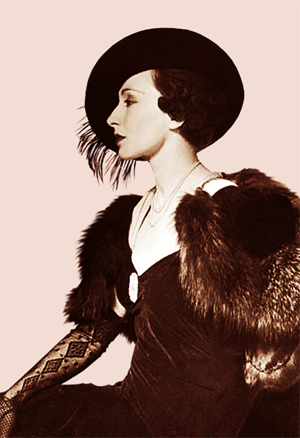by Alex Aubry
June 5, 2016
NOTICE: THIS WORK MAY BE PROTECTED BY COPYRIGHT
YOU ARE REQUIRED TO READ THE COPYRIGHT NOTICE AT THIS LINK BEFORE YOU READ THE FOLLOWING WORK, THAT IS AVAILABLE SOLELY FOR PRIVATE STUDY, SCHOLARSHIP OR RESEARCH PURSUANT TO 17 U.S.C. SECTION 107 AND 108. IN THE EVENT THAT THE LIBRARY DETERMINES THAT UNLAWFUL COPYING OF THIS WORK HAS OCCURRED, THE LIBRARY HAS THE RIGHT TO BLOCK THE I.P. ADDRESS AT WHICH THE UNLAWFUL COPYING APPEARED TO HAVE OCCURRED. THANK YOU FOR RESPECTING THE RIGHTS OF COPYRIGHT OWNERS.
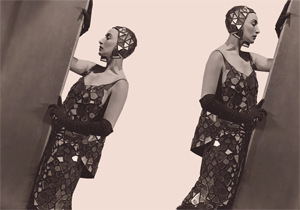
At DNACHIC.COM we’ve always searched for those handful of rare instances when chic Arab women captivated the fashion world. Although frequently left out of history books or given a cursory mention, such individuals point to the Middle East’s presence in a world that was becoming increasingly cosmopolitan with the advent of transatlantic travel.
Similar to their counterparts in the West, by the late 1800s it became fashionable for members of Egypt’s aristocracy and upper classes to embark on grand European tours. For Egyptian women, a trip to Paris was an opportunity to update their wardrobes with the latest European fashions. There were shopping excursions to the noted jewelers, glove-makers, cobblers and milliners of the day, as well as famed couturiers such as Worth, Callot Soeurs, Cheruit and Piguet. As clients of the couture houses, women from Egypt and the Levant were fitted for corseted gowns that would later appear in the well-appointed drawing rooms of Cairo and Alexandria.
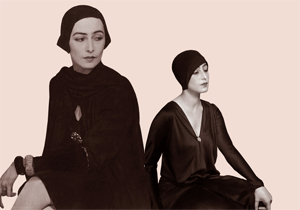
By the 1920s, a number of chic Arab women became regular fixtures within the beau monde. Among them was the Cairo-born Nimet Eloui Bey, a celebrated style icon of her day, whom the French novelist Edmond Jaloux described as a great beauty with “a profile seen on Pharaohs in Egyptian royal statuary.” She would also be immortalized by some of the leading photographers of the era such as May Ray, George Hoyningen-Huene and Lee Miller, who captured Nimet in 1931 for Vogue. Dubbed ‘La Belle Circassienne,’ the Egyptian socialite appeared in the fashion publication in a Molyneux gown accessorized with a turban and pearls.
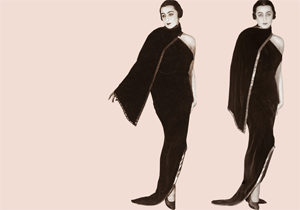
The daughter of the First Chamberlain to Sultan Hussein Kamel of Egypt, Nimet lost both her parents at a very young age, and was brought up by an aunt on the island of Rhodes. She would later return to Egypt to marry Aziz Eloui Bey, an Egyptian aristocrat and railroad tycoon. While in Egypt, the couple entertained at their Art Deco beach house in Alexandria, as well as their elegant Belle Époque mansion in Cairo, decorated by Maison Jensen, the Paris-based interior design firm. Fluent in Arabic, English, French and Turkish, they soon became fixtures amongst the international jet set, attending chic dinners and balls in Cannes, Venice and St. Moritz, where fellow guests included Charlie Chaplin, Daisy Fellows and Bettina Ballard, the Paris-based American Vogue editor.
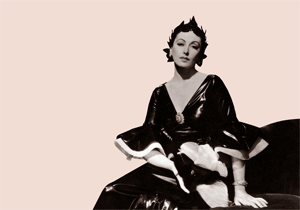
In Paris, Nimet frequented the salons of jazz age couturiers such as Jean Patou, Mainbocher and Marcel Rochas to be fitted for custom evening gowns and day suits. For a surrealist-inspired masquerade ball given by Comtesse Etienne de Beaumont in 1929, the Egyptian beauty arrived dressed in a gown accessorized with a matching caplet, elbow length gloves and large earrings entirely covered in tiny fragments of mirrors. Created for her by the couturier Lucien Lelong, her glittering costume attracted the attention of Vogue, whose editor asked her to pose once again for the magazine, thus cementing her position as an early 20th century style icon.
By the 1920s, a number of chic Arab women became regular fixtures within the beau monde. Among them was the Cairo-born Nimet Eloui Bey, a celebrated style icon of her day, whom the French novelist Edmond Jaloux described as a great beauty with “a profile seen on Pharaohs in Egyptian royal statuary.”
